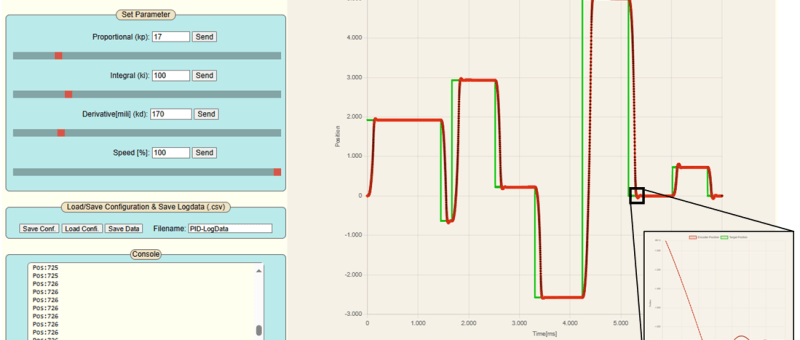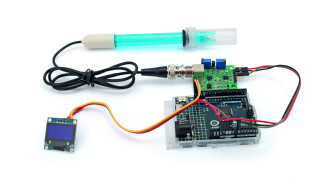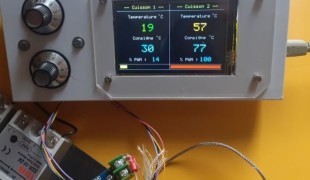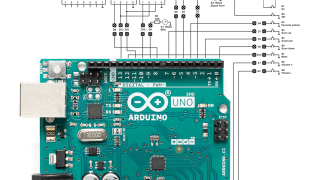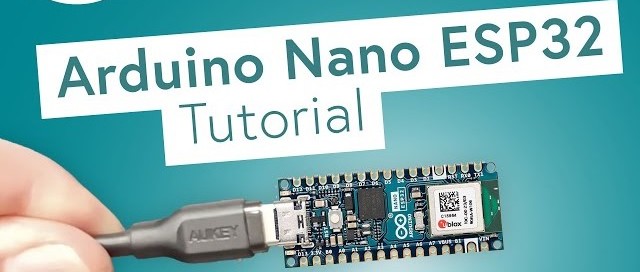About Arduino
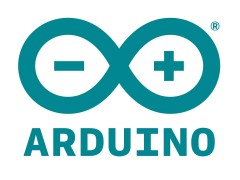
Your own personal page
You can create your own personal page, where you can read the latest articles on your favourit subjects.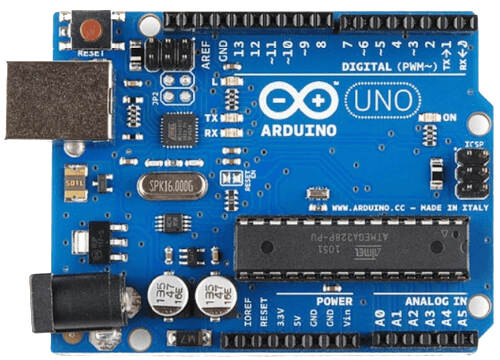 The Ultimate Guide to using Arduino
The Ultimate Guide to using Arduino
- What is Arduino?
- The Arduino Brand
- Arduino is Open and Low-Cost
- From Simple to Complex: Anyone can Succeed with Arduino
- The Arduino Programming Language
- Simplified Programming with a Sketch
- Getting Started: Arduino for beginners
- Two Types of Arduino Boards
- What Can I Make With Arduino?
- Make Whatever You Like!
What is Arduino?
Arduino is a concept born somewhere around 2006. The original goal was to make the power of microcontrollers accessible to people without formal training in electronics or programming and without requiring special tools or equipment. Today, Arduino can be considered a combination of three things:
- A simple, low-cost microcontroller board. The best-known Arduino board is the Arduino UNO based on the ATmega328 microcontroller, but there are many other compatible boards using different microcontrollers. Arduino boards are open hardware, meaning that anyone can build (and even sell) their own.
- A free easy-to-learn, easy-to-use microcontroller programming environment. The Arduino Integrated Development Environment or IDE turns the complexities usually associated with embedded software development into an almost Plug ’n’ Play experience. Getting started with Arduino is a matter of minutes.
- A huge community and collection of free-to-use open-source libraries, programming examples, and applications. Many thousands of people, maybe millions, have built applications for Arduino boards and published their work on the internet for anyone to use as they wish. For most users, creating an Arduino application is nothing more than combining a few libraries found online.
The Arduino Brand
Arduino is also a brand managed by a company named Arduino. This company designs and sells new boards, supervises the development of the IDE, and introduces new products and services. The Arduino brand is protected and may not be used freely.
Arduino is Open and Low-Cost
Arduino has become immensely popular because everything is easy, open, and free. Getting started with Arduino doesn’t have to cost more than, say, €5, the price of a cheap Arduino-compatible board bought somewhere online. The simplicity of the board is also its power.Connecting other things to it is easy thanks to its extension connectors. Thousands of cheap compatible extension boards (also known as shields) have seen the light, enabling rapid yet complex application development without requiring deep knowledge of electronics, sensors, or programming.
From Simple to Complex: Anyone can Succeed with Arduino
Programming an Arduino board is accessible to anyone as the Arduino IDE provides easy ways to use most of the microcontroller’s features. This is completed by a continuously expanding collection of libraries that provide methods for doing things from simple to super complex in an easy way. From blinking an LED to creating cloud-connected IoT applications, anyone can succeed with Arduino in little time.
The Arduino Programming Language
Even though the Arduino IDE uses the C/C++ programming language, the complexities of these languages are hidden by a “curtain”. It is often referred to as the Arduino language. This language (an API in reality) lets users write programs without requiring knowledge of C/C++. Only the most basic constructs found in every programming language (if-then, do-while, etc.) are needed.However, the user is not limited to the Arduino language. Those proficient in C/C++ or even assembly language can use it next to or instead of the Arduino language. This allows for creating faster and smaller programs and provides access to specialized microcontroller functions that the Arduino language does not support natively.
Simplified Programming with a Sketch
The IDE simplifies programming even more by using a simple template for every program called a sketch. The sketch contains two basic functions that every application needs: setup (for initialization) and loop (for normal operation). The sketch provides structure for the program as most Arduino applications don’t need more than this. Behind the scenes the template also handles the often-complex low-level initialization of the microcontroller.With the Arduino language and the default new sketch template, the user concentrates on building a functional application instead of getting lost in C/C++-language details and being discouraged by incomprehensible microcontroller data sheets.
Getting Started: Arduino for beginners
To start with Arduino an Arduino board is required. There are many, from official Arduino-branded boards to clones and variants made by others. The best board to begin with is probably the Arduino UNO as it is the most widely supported board.The Arduino board needs a free USB port on a computer, so make sure you have one.
Get the Arduino IDE
As a starter, the Arduino IDE is needed too. This tool can be downloaded for free from the official Arduino website. There are versions for Windows, Linux and MacOS. There is also a cloud-based version, limiting software installation to a minimum. Installing the IDE is easy. Setting it up is easy too, just choose the Arduino board from a list and select the port to which the board is connected.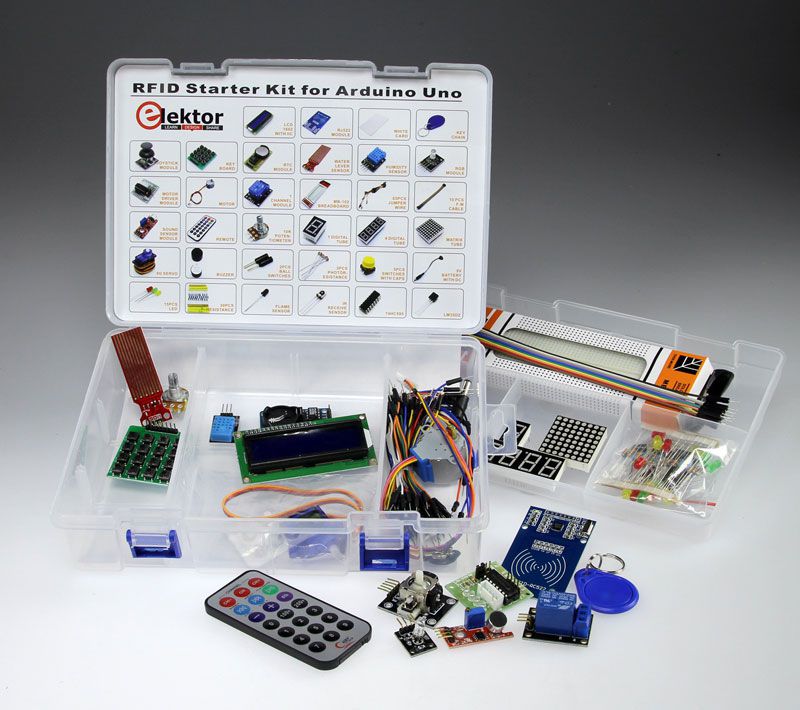
Add More Stuff by Buying an Arduino Starter Kit
The Arduino board has an LED on it for which the IDE has example sketches. This means that with just an Arduino board and the IDE you can get started. However, the desire to go further will quickly develop, and so investing in a starter kit is interesting. There are many to choose from and they tend to include a few LEDs and resistors and other electronic parts like a servo motor, a buzzer, or a relay. Even though some of these parts may be plugged directly on the Arduino board, it is often more practical to use a solderless breadboard. For this reason, many starter packs include a small breadboard and so-called jumper wires.
Learn more about Arduino using Books
A plethora of Arduino resources is available online, from tutorials for beginners to complex connected robots and what not. Nevertheless, getting yourself a book for beginners is practical as such a book contains simple projects with explanations and help you progress more quickly.
Two Types of Arduino Boards
Arduino boards can be divided into two groups:
- Generic boards without on-board peripherals
- Boards with on-board peripherals
Generic Boards
The first group contains the Arduino UNO and its derivatives. These boards are basically so-called microcontroller breakout boards. All they do is providing easy access to the pins of the tiny chips. Some boards are identical to the UNO but smaller and cheaper, others are equipped with different microcontrollers that may feature more memory and/or processing power and more input/output pins, or, on the other hand, microcontrollers that have fewer pins and resources for low-cost applications. Boards from this group require external circuitry to create a functional application.
Boards With Peripherals
The second group contains boards like the Arduino Nano RP2040 Connect. Such boards can be a bit more expensive as they offer a few sensors or Wi-Fi connectivity, or both, but they have the advantage that they may be self-containing, meaning that (depending on the application) no external circuitry may be needed to build an application. An inconvenience of boards from this group may be that they are less universal and may have less free input/output pins as they are used by the on-board peripherals.What Can I Make With Arduino?
Boards like the Arduino UNO are just microcontroller breakout boards that can be used in any application that requires a microcontroller. There is no preferred or best application. They do well in robotics, 3D printers, home automation, IoT, self-driving vehicles, OBD2, clocks, music and art, test and measurement, etc. Whatever you can think of. Of course, some applications require more resources than others and the Arduino board must be chosen as a function of what is needed. Make Whatever You Like! Boards with on-board peripherals like the Arduino Nano RP2040 Connect, on the other hand, do have preferred applications. Some are great for robotics, or OBD2, or art; others excel in home automation, or clocks, or radios, or IoT or test and measurement. It is probably safe to say that there exist an Arduino compatible board for almost every application you can imagine. And Arduino boards have been used in applications that you would never have thought of yourself.
Make Whatever You Like!
Boards with on-board peripherals like the Arduino Nano RP2040 Connect, on the other hand, do have preferred applications. Some are great for robotics, or OBD2, or art; others excel in home automation, or clocks, or radios, or IoT or test and measurement. It is probably safe to say that there exist an Arduino compatible board for almost every application you can imagine. And Arduino boards have been used in applications that you would never have thought of yourself. PID control has been in use for a long time in industry, but only for the past few years has it been introduced into environments such as Ar...


